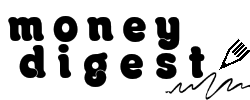Ensuring timely payment for your services is crucial to keeping operations smooth. However, asking for money, especially when payments are late, can feel awkward and uncomfortable.
As a freelancer offering writing and HR consulting services, I’ve experienced firsthand how challenging billing can be. While I know I’ve earned the payment for my work, following up on overdue invoices often feels like begging for what’s rightfully mine. Even with clear contracts in place, the act of reminding clients to pay can leave me wondering if I’m being too pushy. But navigating this aspect of freelancing is essential to ensure I’m compensated for the services I provide.
Why Keeping Up With Clients is Crucial?
The importance of keeping up with your clients cannot be overstated. Regular follow-ups ensure that you’re paid on time, helping you avoid cash flow problems that could impact your ability to cover company expenses.
It’s not just about staying on top of the finances, it’s about fostering healthy business relationships. By communicating your expectations clearly and consistently, you set a standard for future interactions, ensuring that both you and your clients understand the importance of paying on time.
Steps to Get Clients to Pay Their Bills
1. Establish Payment Expectations Early
The key to preventing late payments is setting clear expectations right from the start. During your initial agreement, create a detailed payment schedule that specifies when and how much your client should pay. This reduces the chances of misunderstandings or confusion later on. Including payment terms in your contract (along with details on late fees) is crucial for protecting both parties.
2. Determine the Right Contact Person
Make sure you know who to send invoices to within your client’s organization. Getting the wrong person involved can cause unnecessary delays. Double-check their contact information and ensure that the individual receiving the invoice is aware of the payment terms and expectations.
3. Send Friendly Payment Reminders
Once the due date approaches, send your client a polite reminder. A well-worded email a few days in advance can help your client prepare to pay on time. This gentle nudge helps reinforce the expectation you’ve already set.
4. Follow Up Promptly
If a payment is overdue, don’t hesitate to follow up. Send a clear, polite reminder email immediately after the due date passes. If the payment is still not received after a few days, follow up with another email. It’s essential to be consistent and assertive without being aggressive.
5. Offer Incentives for Timely Payments
To motivate clients to pay quickly, consider offering a small incentive. For example, you could offer a discount for early payment or additional services. This not only encourages prompt payment but also strengthens your relationship with the client.

Image Credits: asiatimes.com
6. Streamline Your Payment Process
Make it as easy as possible for clients to pay you. The simpler the payment process, the more likely clients will make timely payments. Consider using invoicing software that provides multiple payment options, and send invoices promptly after completing work.
7. Charge Late Fees (If Applicable)
Include a clause in your contract about late fees for overdue payments. Most clients will want to avoid paying extra, so this can be an effective deterrent. Ensure your client is aware of this policy when you first set up your payment agreement.
8. Be Flexible With Payment Plans
If your client is facing cash flow issues, consider offering flexible payment plans. Breaking up the payments into smaller amounts over time may help them settle the debt without causing strain. This flexibility can enhance client loyalty and prevent the situation from escalating.
9. Speak Directly to the Client
If emails don’t seem to get through, picking up the phone can be a more personal and effective way to request payment. Speak politely and professionally, expressing your understanding if the client is facing any issues. Be clear about when and how you expect the payment, and ask if there’s anything you can do to help facilitate the process.
10. Consider Cutting Off Services Until Payment is Received
If a client consistently delays payment, you may need to stop providing services until they settle their outstanding invoices. Be firm but polite in explaining that further work cannot be done until the account is cleared.
Crafting the Perfect Payment Request Email
Subject: Friendly Reminder: Payment Due for [Project Name]
Dear [Client’s Name],
I hope you’re doing well. I’m just following up on the payment for [Project Name], which was due on [Due Date]. As of today, the balance of [Amount Due] remains outstanding.
I’ve attached the invoice for your reference. You can make the payment via [Payment Options/Link]. If you have any questions or need further information, please feel free to reach out.
Thank you for your prompt attention to this matter. I look forward to continuing our work together!
Best regards,
[Your Name]
[Your Contact Information]
This polite, professional tone strikes the right balance between being assertive and respectful, which is key to maintaining a good working relationship.

Image Credits: unsplash.com
In a Nutshell
Asking for money doesn’t have to be uncomfortable. By setting clear expectations, sending timely reminders, and offering flexible solutions, you can ensure that you’re paid on time without jeopardizing your client relationships. Just remember, a polite and professional approach goes a long way in keeping things respectful and businesslike.

